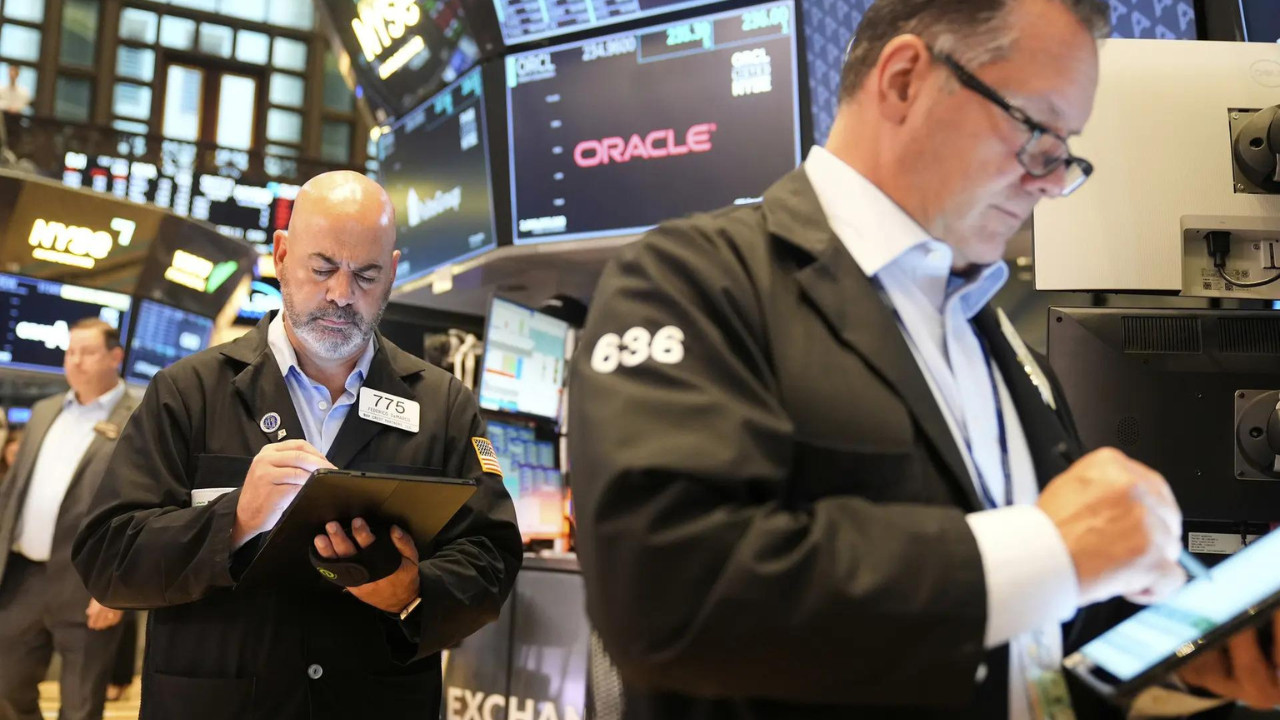US stock indices remained steady near record highs, awaiting key events like Big Tech earnings and a Federal Reserve meeting. Trade deal optimism between the US and EU provided calm, despite unresolved details. Intel shares fell, while Deckers Brands surged. Global equities showed mixed momentum, influenced by trade talks and corporate developments.
The Market’s Murmur: Decoding Wall Street’s Latest Moves
Wall Street’s been a bit of a rollercoaster lately, hasn’t it? One day it’s soaring, the next it’s giving us all a collective knot in our stomachs. The financial landscape feels less like a smooth highway and more like a winding mountain road, full of unexpected turns and breathtaking (or terrifying) views. So, what’s been driving this market mood swing? Let’s dive in and try to make sense of it all.
The major indices – the Dow, the S&P 500, and the Nasdaq – have all been exhibiting a fascinating dance. We’ve seen periods of impressive gains, fueled by surprisingly resilient economic data and a hopeful outlook on corporate earnings. Companies have, in many cases, managed to navigate the inflationary pressures and supply chain snags better than initially anticipated, leading to a surge in investor confidence.
<img src="image-of-bull-and-bear.jpg" alt="A statue of a bull and bear, representing the fluctuating US Stock Market.”/>
But then, the music changes. Concerns about persistent inflation, the potential for further interest rate hikes by the Federal Reserve, and whispers of a possible economic slowdown start to creep back into the conversation. This creates a push-and-pull dynamic, leaving investors wondering whether to hold tight, buy the dip, or brace for a bigger correction.
Decoding the Fed’s Next Move and its Impact on the US Stock Market
One of the biggest factors influencing market sentiment is undoubtedly the Federal Reserve’s monetary policy. The Fed has been walking a tightrope, trying to cool down inflation without triggering a recession. The central bank’s decisions on interest rates have a profound impact on borrowing costs for businesses and consumers, which in turn affects economic growth and corporate profitability.
The market is constantly trying to anticipate the Fed’s next move, parsing every statement and data release for clues about the future direction of interest rates. Any hint that the Fed might be considering a more aggressive approach to tackling inflation can send shivers down Wall Street, while signs that the Fed might be leaning towards a more dovish stance can provide a boost to stocks. This uncertainty is a major contributor to the volatility we’ve been seeing. It’s a bit like trying to predict the weather – we can look at the forecasts and the current conditions, but there’s always a chance of an unexpected storm. Learn more about interpreting key economic indicators here.
Global Trade and its Tangled Web
Beyond the Fed, global trade dynamics are also playing a significant role. Trade agreements, tariffs, and geopolitical tensions can all have a ripple effect on the US stock market. For example, ongoing trade disputes between major economies can disrupt supply chains, increase costs for businesses, and dampen investor enthusiasm. Similarly, unexpected political events or shifts in international relations can create uncertainty and lead to market volatility.
In this interconnected world, the US stock market is inextricably linked to the global economy. What happens in one corner of the world can quickly reverberate across financial markets, highlighting the importance of staying informed about international developments.
Navigating the Current Market Landscape
So, what does all this mean for the average investor? Well, it means that patience and a long-term perspective are more important than ever. Trying to time the market is notoriously difficult, and chasing short-term gains can be a risky strategy. Instead, focusing on building a diversified portfolio and staying disciplined in the face of market fluctuations is often the best approach. Remember that investing in the US Stock Market carries risk, and consulting a financial advisor is always recommended.
The market may continue to experience periods of volatility as it grapples with various economic and geopolitical challenges. However, it’s important to remember that the stock market has historically proven to be a powerful wealth-building tool over the long run. By staying informed, remaining disciplined, and focusing on your long-term financial goals, you can navigate the current market landscape with confidence. The key is to not panic and remember that market fluctuations are a normal part of the investment process. Stay steady, stay informed, and remember that the long game is often the winning game.







